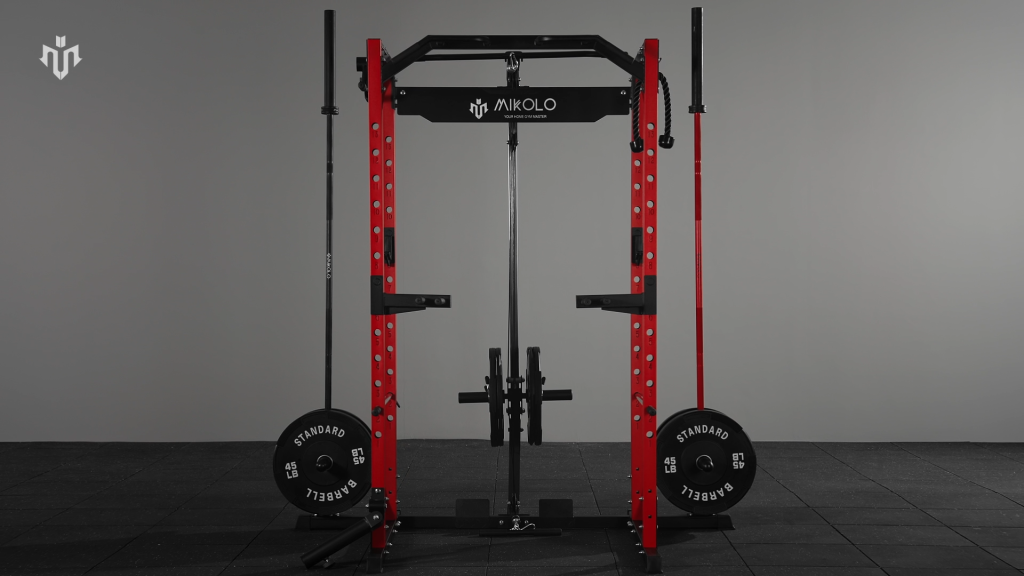When building a home gym, one of the most critical pieces of equipment to invest in is a power rack. A power rack, also known as a squat rack or power cage, offers safety and versatility for a variety of exercises, making it a cornerstone for strength training. This guide will help you understand the key features to look for and how to choose the best power rack for your fitness needs.

What is a Power Rack?
A power rack is a sturdy piece of equipment designed to support a range of weightlifting exercises, including squats, bench presses, and deadlifts. It consists of four vertical posts connected by horizontal bars, creating a cage-like structure. The primary purpose of a power rack is to provide safety by allowing you to perform heavy lifts without a spotter, thanks to adjustable safety bars.
Benefits of Using a Power Rack
- Safety: Adjustable safety bars catch the weight if you fail a lift, preventing injuries.
- Versatility: Supports a wide range of exercises, from squats to bench presses to pull-ups.
- Strength Building: Allows for progressive overload, which is essential for building muscle and strength.
- Stability: A well-built power rack provides a stable and secure environment for heavy lifting.
Key Features to Consider
1. Build Quality and Material
The build quality of a power rack is crucial for safety and durability. Look for racks made from heavy-duty steel with a high weight capacity. Thicker steel (11-gauge or better) and high-quality welds ensure the rack can withstand heavy loads over time.
2. Weight Capacity
Ensure the power rack can handle more weight than you currently lift. A good rule of thumb is to choose a rack with a weight capacity of at least 700 pounds, allowing room for growth in your lifting abilities.
3. Adjustability
A power rack should offer adjustable safety bars and J-hooks to accommodate different exercises and user heights. Look for racks with multiple adjustment points to ensure versatility and proper lifting form.
4. Footprint and Size
Consider the space available in your home gym. Measure the area and ensure the power rack will fit comfortably, leaving room for movement around the rack. Also, consider the height of the rack to ensure it fits within your ceiling height.
5. Additional Attachments
Many power racks come with optional attachments like dip bars, pull-up bars, lat pulldown systems, and landmine attachments. These additions can significantly enhance the functionality of your power rack, allowing you to perform a wider range of exercises.
6. Stability
A stable power rack is essential for safe lifting. Look for a rack with a wide base and heavy-duty construction. Some racks offer the option to bolt the unit to the floor for added stability.
Tips for Using a Power Rack Safely
- Check Equipment Regularly: Inspect your power rack for any signs of wear or damage. Tighten bolts and replace worn-out parts as necessary.
- Use Safety Bars: Always set the safety bars at an appropriate height for the exercise you are performing.
- Proper Form: Focus on maintaining proper form to avoid injuries. Consider consulting a professional trainer if you are new to weightlifting.
- Secure Weights: Use collars to secure weights on the barbell to prevent them from sliding off during lifts.
Conclusion
A power rack is an invaluable addition to any home gym, offering safety, versatility, and the ability to perform a wide range of exercises. By considering factors such as build quality, weight capacity, adjustability, size, and additional attachments, you can find the perfect power rack to meet your fitness needs. Invest in a high-quality power rack, and you’ll be well on your way to achieving your strength training goals safely and effectively.
For more detailed specifications and buying guides on different power rack models, visit our website gym-mikolo.com.